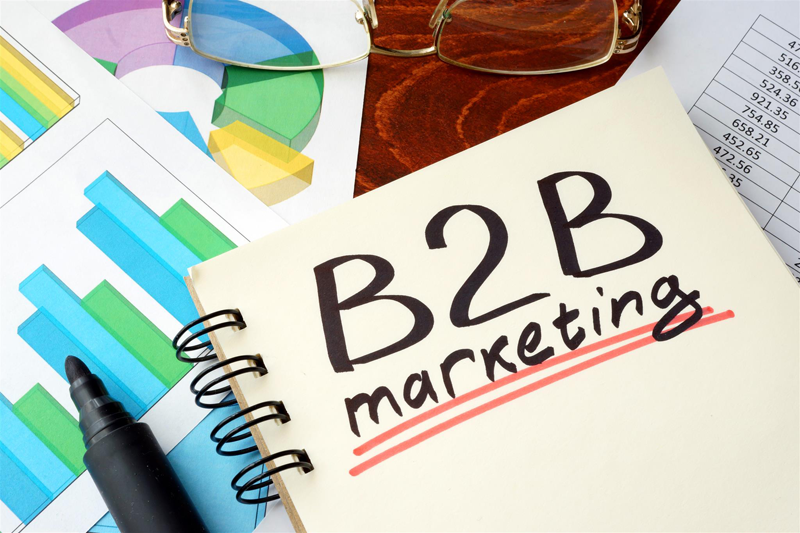Marketing to B2B consumers

Marketing is not just about targeting customers. Attention also needs to be given to the potential of selling your products and services to other business. A lot of analysis is given over to the current and future trends in consumer led marketing – but how is this different when you are targeting a business? Here are three of the most important considerations for marketers hoping to secure business to business customers.
B2B is not so different to B2C
In the past, B2B marketing has been done in broad strokes. The materials are hugely generalised and focused on leveraging the professional needs of an organisation. In recent years there has been a shift towards a more B2C approach, as marketers look to target specific personae inside businesses they are targeting. It is no longer felt to be effective to aim at the whole corporation, but instead the decision-makers.
This approach to B2B marketing is called Account-Based Marketing. ABM is now the norm in marketing to businesses and is divided into three categories. There is one-to-one ABM, one-to-few ABM and one-to-many ABM. The point is to target the customer journey of the key contact or contacts in the company – as they would expect if they were a consumer not working within a business.
ABM is also called ultra-personalisation. But these are just words. Realistically, strategies are the same as have always been used in marketing – targeting customer expectations to convert a prospect to a sale. It then means delivering an end-to-end customer experience. You will need to deliver material to the consumer consistently and be prepared to offer rapid response times – everything that a B2C prospect would.
You need to aim at young middle leaders
When you are choosing who to target in business it is not the top boss. It is likely that they are beyond the daily grind of looking at promotional materials online or social media. It is likely that all buying decisions, even ones of significance, are devolved down to young middle leaders. This means not aiming at the potentially digitally disconnected CEO – which might feel counter intuitive – but instead dig into the context of the company structures to see who is buying at your level.
As Millennials and Generation Z make up 50% of the population and have been connected to the internet from birth, there is a logical place to reach these buyers. Those born in 1981 are now 47. The workers born in 1996 are 22. Your audience are somewhere in between. The oldest millennials are likely in positions to make major purchasing decisions, those at 22 are starting to be influential in companies. By 2025, Millennials and Gen Z will represent 75% of the workplace.
This means your marketing efforts need to target these youthful team members. And these new team members are three times more likely to be influenced by social media than any other channel. You also need to keep up-to-date with the social media channel where these people frequent – namely YouTube, Snapchat and Instagram.
This target audience also trust user-generated content much more than the analysis by the company itself – even though they are working within a company themselves. So, it is possible to adapt and use the digital grapevine for recommendations – foster word of mouth recommendations from one company member to another.
Social media: the golden egg is cracking
There is a problem with this analysis of B2B marketing. The route to the decision-makers in businesses are best found using social media. However, the algorithms used by social media platforms are making it harder for your content to reach your customers – unless you pay for the privilege. The “free” economy of the social media network is being slowly shut down.
Social media networks understand they are the best route to the new audience and know they are in a position of power. They can demand much from businesses who wish to reach consumers – whether these are decision-makers in businesses or whether they are everyday consumers. For instance, Twitter preferences those tweets that are most popular – “the best tweets rise to the top” – but how this is judged is difficult to know and larger brands with bigger followings will find it easy to access their customer-base.
The way to short-cut organic rankings – which are becoming more and more beyond the control of the user – you need to invest in social media advertising. In other words, you are going to have to pay for the mode that is most likely to succeed in reaching your B2B customer. This can be expensive and therefore not offer a valid return on the investment.
The most effective way to use social media is to be more targeted in your use of platforms. Part of your B2B market research is to find out what platform is best to use to reach managers. Is it the traditional platforms of Facebook, Instagram or Twitter – or are you better reaching out through Quora or LinkedIn? So, focus on the quality of your exposure rather than the quantity.
In conclusion
In short, B2B consumers are a valuable market to target. The approach to targeting this customer group is not that different to targeting everyday customers. You need to appeal to the decision-makers directly and these are not necessarily the biggest bosses in the company. These decision-makers are likely to be found best using social media and using word-of-mouth on social media. The downside to this analysis? The world of social media advertising is becoming more expensive and it is getting harder to rank organically in newsfeeds.
The main takeaway is this: draw up buyer personas for the young decision makers in businesses and research ways of making your social media messages reach this persona.


